I’ve always loved the novella, which Henry James called “the beautiful and blessed nouvelle” and which Joyce Carol Oats deemed “the most difficult, at least for me” of “all the literary prose forms.” Its length makes it seem grander and more important than a mere short story, while its brevity means that the reader can finish scores of them in the time it takes to plow through a long novel. More to the point, the novella has made an outsized impact over the past two hundred years. The Metamorphosis introduced us to Gregor Samsa and the alienation of modern experience, while nearly a century before that Melville’s Bartleby the Scrivener (1853), with its strange law clerk whose response to the demands of capitalism is an indifferent “I prefer not to,” would prefigure the Occupy Wall Street movement of 2011. Particularly popular in 19th-century America, publications such as The Atlantic Monthly, Colliers Weekly, and Scribner’s Magazine would publish them in full. Masters of the form like Henry James and Edith Wharton regularly appeared in their pages.
But since the time of James and Wharton, in the U.S. the novella has largely been an orphaned form that struggles to find a home in today’s publishing industry. For most commercial book publishers, it’s too short. For magazines and literary journals, it’s too long. For whatever reason, my own short fiction often runs long. My first two story collections both contain novellas and many of the stories in my new collection, The Flounder, are around ten-thousand words.
But is the novella experiencing a resurgence? It’s been a great year for the form. One of the modern masters of the novella, Annie Ernaux, won the 2022 Noble Prize, which made her slim books disappear from shelves and online retailers overnight. Meanwhile, the Irish short story writer Claire Keegan’s Small Things Like These became the shortest ever stand-alone book to make the Booker Prize shortlist. While many excellent novellas hide inside short story collections, my list below consists entirely of novellas published as stand-alone books. A number of these books were recommended to me by friends, one of whom called her recommendation a two-commute book, meaning she could finish it on the Boston T in a single trip back and forth from the office. This points out another virtue of the form: its relative accessibility to those of us (probably most of us) who are constantly on the move and whose attention is in short supply. Given our contemporary inability to sit still and concentrate, the novella may be the perfect long(ish) form for our frantic and screen-obsessed age.
Before offering my definition of a novella, I’ll concede that anything I say can easily be disputed. Great writers transcend the expectations of their genres. Alice Munro’s short stories often feel like novels, encompassing whole lives, while Nicholson Baker’s first novel (which I would call a novella, though his publisher does not), The Mezzanine, takes 135 pages to tell the story of its protagonist’s single escalator ride in an office building. Nonetheless, I’ll say that prose fiction around 15,000 to 50,000 words is a novella. A hybrid of the short story and the novel, the novella combines the compression and power of the former and the expansiveness of the latter. Like the novel, it can take on large scopes of time, years and even decades, and offer multiple perspectives (see Minor Detail or The Buddha in the Attic below) and still offer us the possibility of reading it in one or a few sittings. Novellas will rarely have space for tangents, multiple plots and subplots, as do many big novels, which Henry James referred to as “large loose baggy monsters, with their queer elements of the accidental and the arbitrary.” The concision of the novella means it can, like short fiction, heighten the emotional power of an event or series of events through a singular focus (see Claire Keegan’s Foster).
Finally, while I hope that the novella will make a resurgence and appear more often on bestseller lists, most of the below titles are published by small and independent presses. This means that readers will have to search these out. On the other hand, the form’s freedom from commercial expectations means that novellas can take risks, transgress, test boundaries, and innovate, which many of the below books do with abandon and artistry.
I’ve ordered my list of nine novellas by the date of publication in the United States, with the most recent titles first.
*
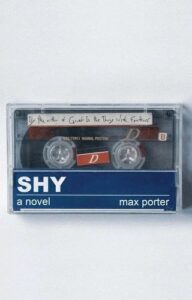
Shy by Max Porter
In 2016, Porter wowed readers with his debut novella, Grief Is the Thing with Feathers (a movie is in the works starring Benedict Cumberbatch), and is just out with his third book, Shy. His brief, emotionally resonant books are all formally innovative, featuring verse, sentences fragments, narrative prose, and dialogue, which makes the clarity and compulsive readability of his work the more surprising. In Shy, the reader meets the eponymous character, a troubled youth in a detention facility. Without pathologizing his young protagonist, Porter shows us the violence, emotional turmoil, and vulnerability of a young man as he makes the decision to continue living or to end his life. What’s most surprising here: the humor.
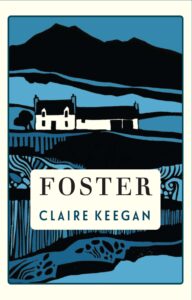
Foster by Claire Keegan
Though this book first appeared in the United Kingdom in 2010, in the U.S. it came out last year as a follow up to Keegan’s international bestseller Small Things Like These. Both these novellas are keenly observed tales of provincial family life that focus on children. Her mother preparing to have yet another baby, the young girl and narrator at the center of this novella spends a summer living with the Kinsellas, a childless couple, and gradually pieces together the tragedy in this household (the Kinsellas’ son recently died). Perceiving the world through vivid, sensual detail, the child comes to understand that she wants and needs this couple, who offer her attention, delicious food, and new clothes, as much as they want and need her: “Walking back along the path and through the fields, holding [the woman’s] hand, I feel I have her balanced. Without me, I am certain she would tip over. I wonder how she manages when I am not here….”
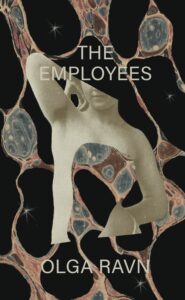
The Employees: A Workplace Novel of the 22nd Century by Olga Ravn
Just in time for our obsessions with AI, this innovative science fiction novella from Danish writer Ravn takes the form of a report “by the committee” focused on gaining a “knowledge of local workflows” on board the interstellar Six Thousand Ship. The corporate jargon is eerily familiar yet charged with a melancholy lyricism that gives this series of cosmic memos the feel and radiance of prose poetry. Ravn raises the question of what it means to be human, which takes on new meaning when posed by thinking and feeling machines that stage a mutiny. When humanoids assert their dominance, the human characters come to question the importance of their own humanity: “Would it be so terrible not to be human? Would it mean not dying? I’m not sure I still feel pride in my humanity.” Utilizing multiple voices and points of view, this book will make readers wonder if a human or humanoid is speaking at any given time.
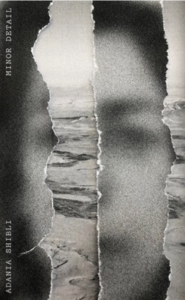
Minor Detail by Adania Shibli
Palestinian author Shibli makes fascinating use of two different point-of-view characters in her harrowing account of a crime that takes place in the aftermath of Israel’s 1948 war known as the Nakba (catastrophe or disaster) to Palestinians. Told in two parts, this novella first gives an account of the crime and then moves to near present-day where a traumatized narrator attempts to investigate the incident. The clinical, detached narration of the first half, told in the language of the oppressor, offers a vivid contrast to the harried, uncomfortably close, and finally panicked first-person account of the second half. Anyone interested in better understanding life in the Occupied Territories needs to read this powerful tale, a finalist for the National Book Award for translated literature.
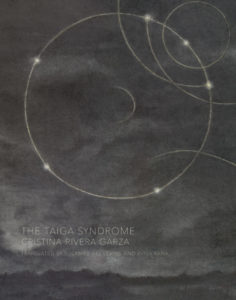
The Taiga Syndrome by Cristina Rivera Garza
For readers unfamiliar with MacArthur “Genius” Grant winner Cristina Rivera Garza, this strange, inscrutable book, which explores the borders between prose and poetry, realism and parable, civilized and wild spaces, is a great place to start. An atmospheric retelling of Hansel and Gretel in the noir genre so important to contemporary Mexican literature, this novella follows a detective who sets out with an interpreter into a taiga in search of a woman who has left her husband. In addition to the folk and fairy tales referenced in this novella, readers might think of Joseph Conrad’s Heart of Darkness and much of the evocative and layered work of Anne Carson.
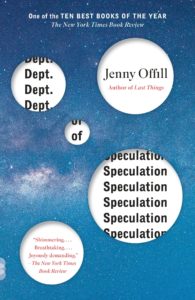
Dept. of Speculation by Jenny Offill
Upon its publication in 2014, this brief novel, told in prose-stanza form, became a literary sensation. It tells the story of a young wife whose ambition to be an “art monster” seems out of reach when she becomes a mother and fails to find the time and space to complete her second novel. The humor and intelligence here are sharp. When the narrator’s household is besought with bedbugs, she quotes this Lebanese proverb: “the bedbug has a hundred children and thinks them too few.” At the same time, of course, she’s struggling with her one daughter. While the plot centers around infidelity, this novella contains multitudes: musings on the space race between the Soviet Union and the United States, astronomy, philosophy, theology, mental health struggles, the teaching of writing, and much more.
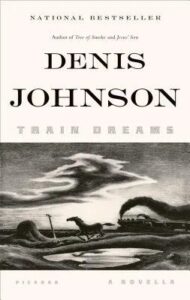
Train Dreams by Denis Johnson
A finalist for the Pulitzer in 2012, when the prize was not awarded to any book of fiction, this marvel of compression and lyricism showcases the unique prose style that readers first encountered in Jesus’ Son. Perhaps its length was one reason it didn’t win the prize. It’s certainly not its quality. Johnson, who died in 2017, was an impressively versatile writer, a poet who won the National Book Award for Tree of Smoke, a novel of over 600 pages about the Vietnam war that does what many big books do: offers compelling exposition, backstory, voluminous characterization, and builds to a harrowing climax. While these are both amazing books, to my mind Train Dreams is more unique. Often hallucinatory, with lyrical, muscular prose, the story documents the trials of a day laborer, Robert Grainier, who falls in love, marries, builds a home in the wilderness of the American West at the beginning of the 19th century then loses everything, including his wife and small daughter, to a forest fire. This happens in the middle of the book, which asks, among other questions, how one can begin again while burdened with grief and the literal ghosts of one’s past.
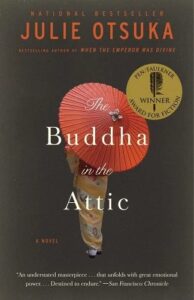
The Buddha in the Attic by Julie Otsuka
Told in the third-person plural (“we”), this best-selling immigrant story follows a group of young “picture brides” as they travel from Japan to San Francisco, where they meet their husbands for the first time and finally disappear from their homes when they and their families are taken to internment camps. With section headings like “Come, Japanese,” “First Night,” “Whites,” “Babies,” “Traitors,” and “A Disappearance,” this novella mixes irony, humor, and pain in telling the story of what happens to a generation of Japanese women newly arrived in the U.S. While Otsuka shows us the injustice of their situation, these women who speak in one voice nonetheless are various, individualized, and occasionally active agents within their admittedly constraining and oppressive social world.
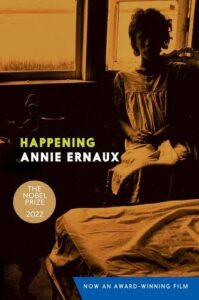
Happening by Annie Ernaux
A story of a young woman’s struggle to get an abortion in 1960s France, this novella was made into a stunning film released in the U.S. in 2022. In the wake of Roe versus Wade’s demise, Happening takes on an increasingly urgent topic. American readers may appreciate the absence of the life-versus-choice debate in Ernaux’s account. Instead, this tale foregrounds questions of class and the protagonist’s dogged struggle to save her mind, body, and career from the fate of impending motherhood. While the experience of receiving an illegal abortion is graphically depicted, the novella also insists on the act of documenting the experience as similarly taxing and important. The idea of writing as a public and, at times, private responsibility is moving, especially in relation to this topic. “Maybe the true purpose of my life,” muses the narrator in the final pages, “is for my body, my sensations and my thoughts to become writing…something intelligible and universal, causing my existence to merge into the lives and heads of other people.”
__________________________________
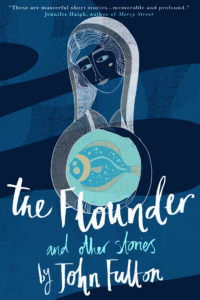
The Flounder by John Fulton is available from Blackwater Press.
